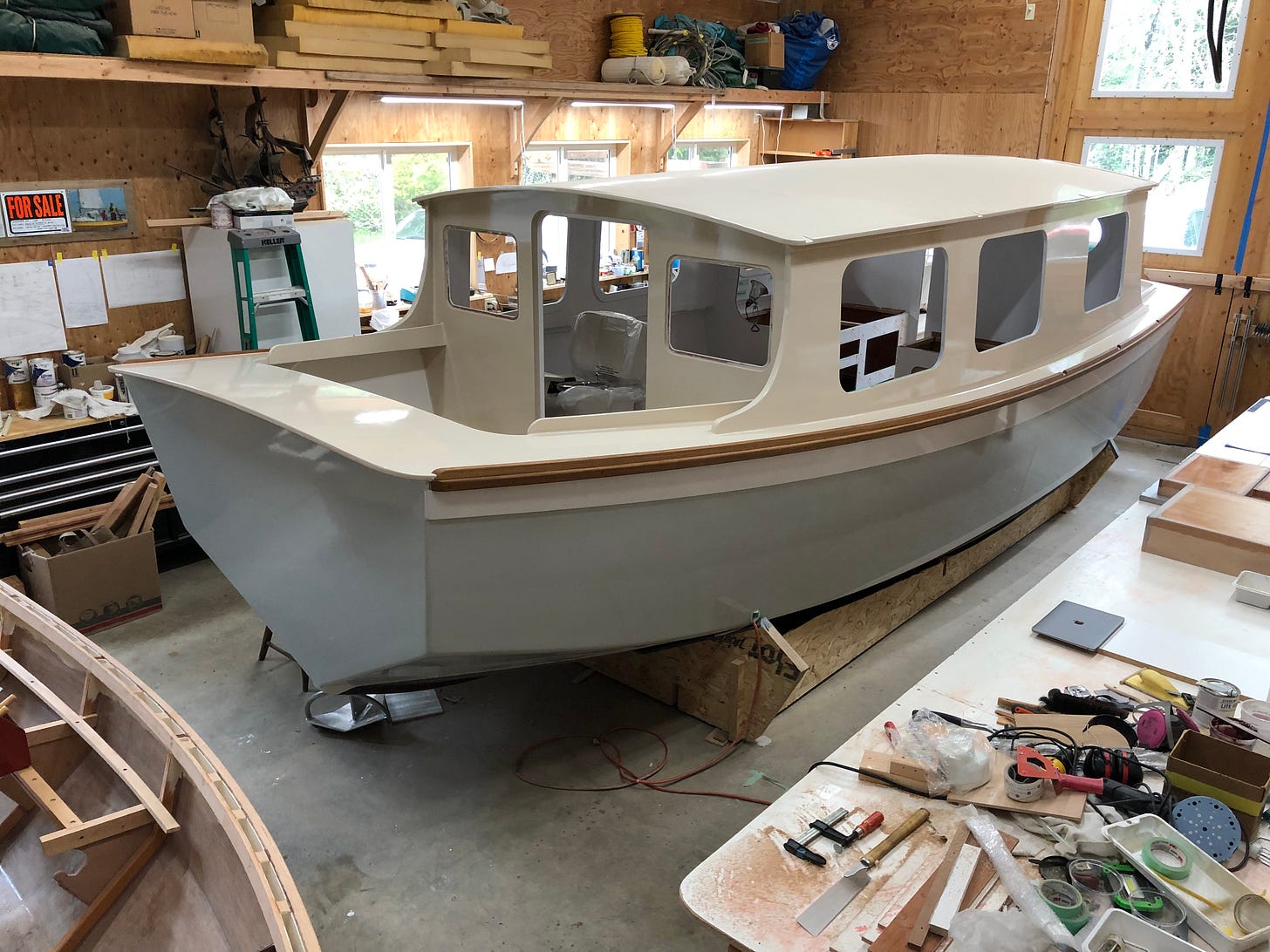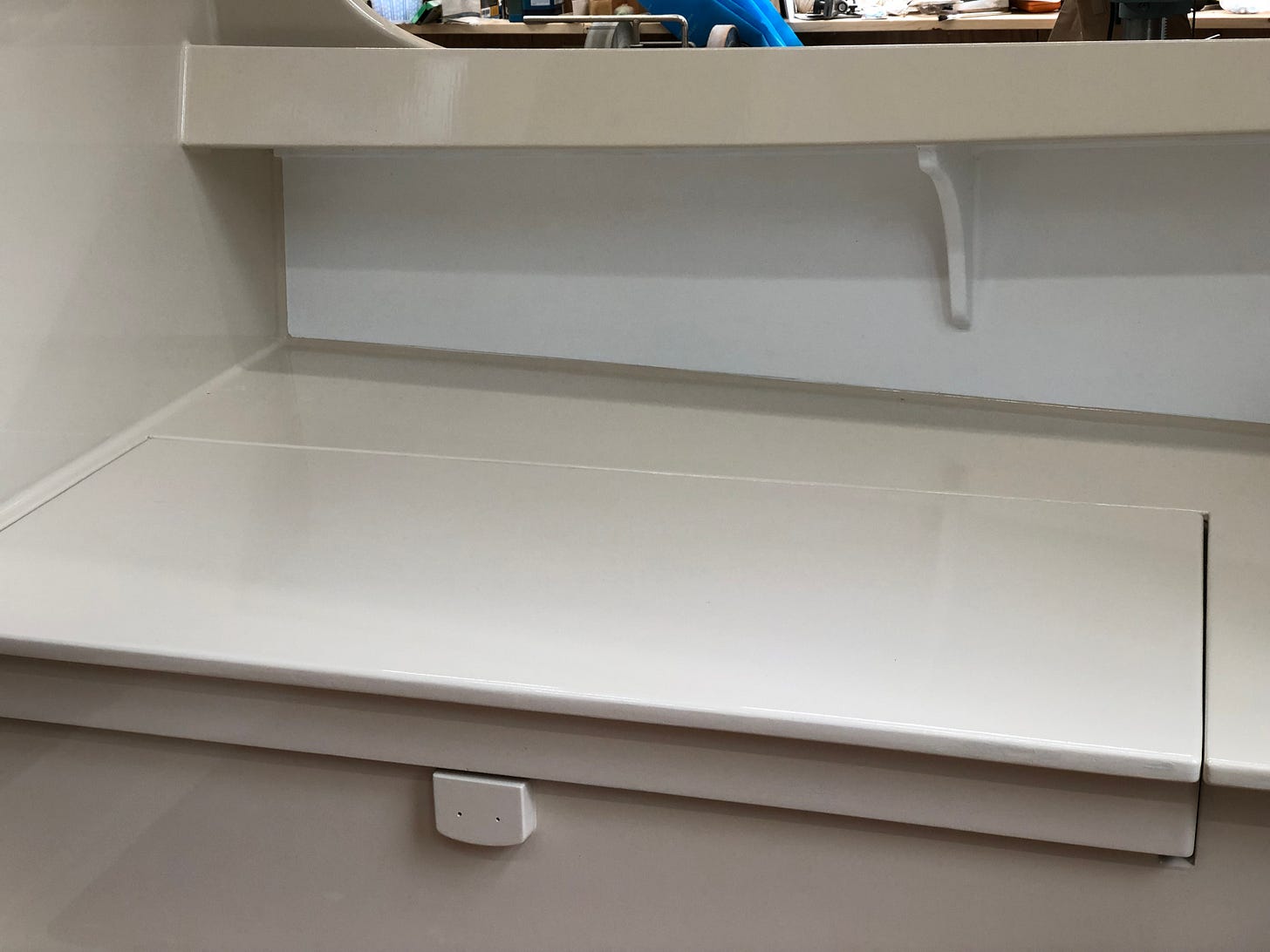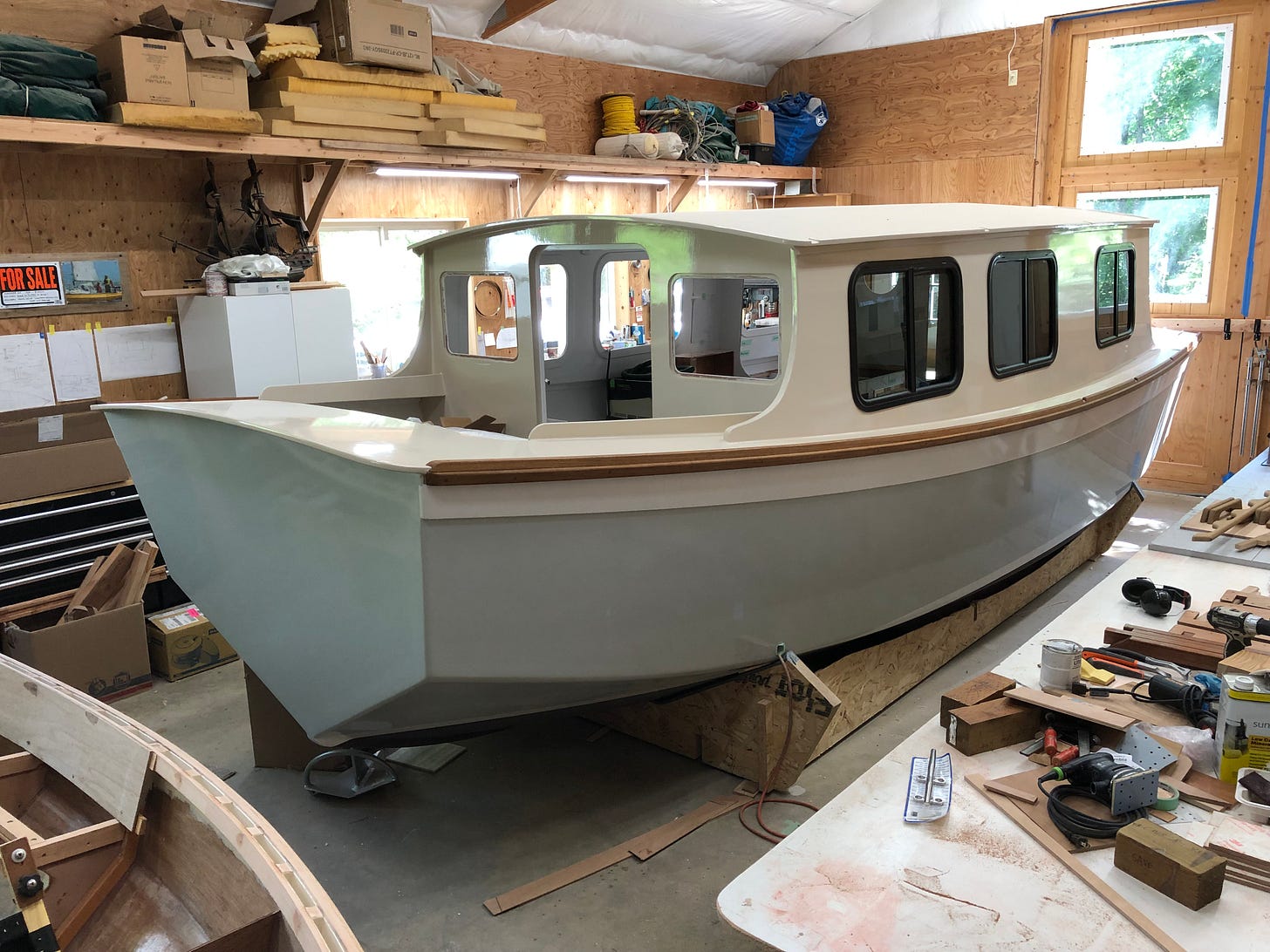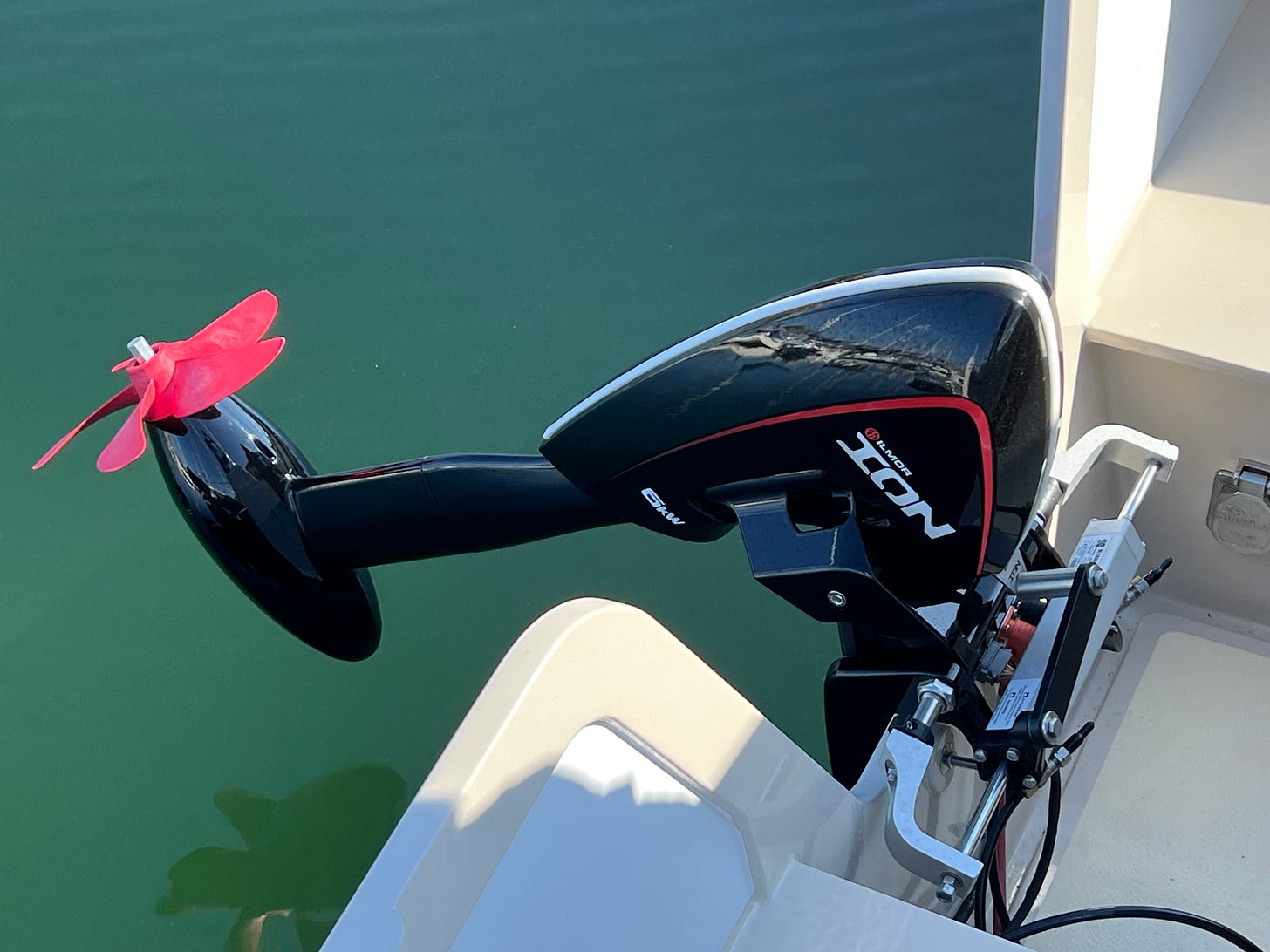Part 3 of 4: More Paint, Then Interior Work
…And also wiring as we get closer to finishing the job
by Chelcie Liu
After being rolled rightside-up again, final exterior and interior paint was applied. As mentioned earlier, the hullsides are Pettit EZ-Poxy “Seattle Gray” (3715), and the cabin exterior, cockpits and decks are “Sandtone” (3518). The sheer strakes and boot stripe are “White” (3175), and the interior and some parts of the cockpits are “Semi-Gloss White” (3106). To help keep the exterior coatings cooler on hot, sunny days, I wanted to use light colors on the exterior surfaces. The overall aesthetic I wanted was a clean workboat finish, not a “yacht finish.” Thus, the teak rub/toerails will either be allowed to go gray, or will have an oiled finish. They will NOT be varnished!
The lids for the cockpit seat lockers will have hinges and latches after the wiring and hydraulic steering system are completed. A hydraulic steering system was selected to make it easier to set up an autopilot and remote steering. Hydraulic steering should also be more trouble free in a salt water environment.
Laingdon was back in Oregon, so Kees was working by himself. His current projects were the interior cabinetry (doors and drawers) and other interior work (plumbing and helm station). He planned to install the windows soon.
The photos below show HIDEAWAY with exterior paint applied, and the aft starboard cockpit seat, as of mid-April, 2024.
The photo below shows the port windows mounted. These are RecPro, Tear Drop, 30” W x 20” H, RV windows that only cost $998 for all six windows. Though designed for the flat sides of an RV, the sliding windows still work fine when mounted on the slightly curved cabin sides. When fine tuning Devlin’s design, we bought one of these windows to see if they would work for HIDEAWAY. After deciding they’d be fine, Brandon used that window’s dimensions to finalize the cabin design and prepare the CNC cutting file. These Windows are easy to mount, and fit perfectly.
Kees’ interior projects included the galley area, port side cabinet and helm area, which we’ll showcase tomorrow in Part 4 of 4, along with HIDEAWAY’s launching.
At this stage Kees was also preparing for installation of the 120V AC, and 12V and 48V DC electrical systems. Gordan Lacey, marine electrician, joined the team to install these various electrical systems.
I decided to use the ION 6, manufactured by Ilmor Engineering, because it has electric trim and tilt as standard features, and is designed to work with a variety of battery systems. Many electric outboards communicate better, or, in some cases only, with their proprietary batteries.
Below is Marty Loken’s shot of the prototype longshaft ION 6 outboard…
Even though this is Ilmor’s first electric outboard, I felt comfortable using it because of their history of well engineered internal combustion engines and their collaboration with Tohatsu, Japan’s oldest outboard manufacturer. This Plugboats article, (https://plugboats.com/tohatsu-ilmor-electric-outboard-launches-6kw/), has more information on the relationship between Ilmor and Tohatsu. After reading this article, I called Ilmor to see if they could give me additional information. The person I talked to took my email address. The next morning I received an email from ION brand manager Mary Jo Reinhart, asking for more details on my boat project. Following email exchanges and additional conversations, she said they could supply me with a preproduction model by the end of May. (After working with Mary Jo during several exchanges, I felt Ilmor would be a great company to work with.)
Tomorrow, the concluding installment…







As I was reading Installment 3 today, for the umpteenth time, I suddenly realized I should have mentioned that the RecPro windows have a removable screen. Also, the two rectangular windows in the forward cabin bulkhead, the rectangular windows in the forward and aft cabin doors, and the two circular windows in the aft cabin bulkhead were all custom made locally of lightly tinted, automotive safety glass. I wanted to use glass for these windows so they would not be as easy to scratch, and as likely to develop crazing, as plastic windows.
I'd be very interested to see the schematic for your electrical setup. I want to drop a 5 KW 48V battery in my Penguin to both power the Propulsion and also my house loads through a48V to 12V transformer. I'd charge off of shore power and solar. Great boat! This is exactly what I would do if I didn't still enjoy hanging a few rags.